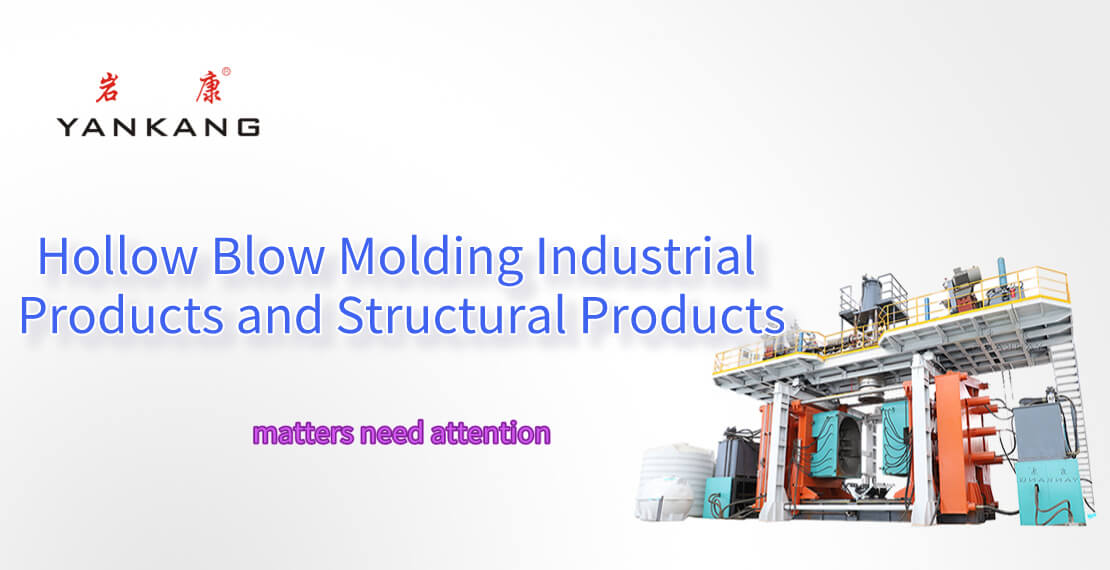What aspects should be paid attention to when hollow blow molding industrial products and structural products?
In this post, you will find out.
With the continuous development of blow molding technology, the application range of hollow blow molded products is becoming wider and wider. In addition to being used as packaging containers, hollow blow-molded products are also widely used in industries such as automobiles.
As industrial products and structural products, most blow-molded products have complex shapes, large surface areas, clear surface contours, and smooth surfaces. It should also have good mechanical properties. Including good impact toughness. Rigidity and dimensional stability, etc.
Therefore, the following aspects should be paid attention to when hollow blow molding.
(1) Materials used for hollow blow molding industrial products and structural products
Olefins include high-density polyethylene (HDPE), low-density polyethylene (LDPE), polypropylene (PP), especially high-weight or ultra-high molecular weight HDPE and PP.
Commonly used engineering plastics are PA6, PA66, PA11, PA610, ABS, PC, PES, PEEK, ASA, polysulfone, polyarylate, and alloys (glass fiber reinforced PA or PPS, modified PPE, modified PBT, modified PC, PBT/PC, PA/PPE, PC/PET, ABS/PC, ABS/PA, etc.).
At present, blow-molded parts of engineering plastics are mainly used in automobile manufacturing. Such as PBT, elastomer modified PBT/PC alloy or PC/PET alloy blow-molded bumpers; using PA, PPE/PA, PBT/PC or ASA/PC blow-molded spoilers; using PC/ABS or modified PPO Blow-molded instrument panel; PA, PPE/HIPS, ASA or PC blow-molded ventilation pipe; PA blow-molded hydraulic oil storage tank, etc.
(2) Requirements for molding equipment of hollow blow molding industrial products and structural products
When blowing industrial parts, the following points should be paid attention to when choosing an extruder.
① For large industrial parts, a larger extruder is required.
② To improve the stability of extrusion and increase output, a slotted feed extruder should be used for logarithmic industrial parts.
③ To improve the performance of the parts, the screw should be equipped with mixing elements that can meet the characteristics of the processed polymer.
(3) Requirements for the die head
The main methods used in the molding of industrial parts are: reciprocating screw intermittent and reciprocating screw continuous, and the die is intermittently forming the preform.
The accumulator’s head forms the preforms intermittently, which is suitable for blow molding of engineering plastics.
The reciprocating screw method intermittently eats the molded shape, which is suitable for medical accessories and small gasoline tanks.
The reciprocating screw method continuously molds the preform, which is suitable for blow molding small or olefin industrial parts.
The design requirements for the industrial part mould head mainly have the following aspects.
① The design of the die head should minimize the mechanical properties at the fusion line.
② For blow molding some industrial parts, it is more advantageous to use oval, rectangular, and other non-circular parisons or flat sheets than round parisons. For example, the production of flat-width plate-shaped parts or double-walled boxes can be blow-molded with rectangular parisons with similar shapes to the parts.
③The flow channel of the machine head should be streamlined and be plated.
(4) Process requirements for blow molds
①The mold must have good exhaust performance to ensure that industrial parts with clear outlines and smooth surfaces are obtained.
②For blow molding of engineering plastics and parts with sharp corners or complicated shapes, the mold can be equipped with a vacuum system.
③The mold parts have high tensile strength at the edge of the clamping blade.
④The mold should be equipped with a flash removing device to improve the appearance performance of the part.
⑤ To improve the cooling efficiency and cooling uniformity, and reduce the residual stress of the parts, the products can be cooled from the inner and outer walls at the same time.
(5) Process requirements of the control system(click for more details information)
To ensure the smooth production of industrial parts and obtain good product quality, the following aspects should be controlled during production.
① Temperature control. The temperature control mainly includes the temperature control of each section of the extruder barrel and die head. Through temperature control, to ensure that the extruded parison has good plasticizing quality and stable performance.
②Control of screw pump speed and melt temperature.
③Control the wall thickness of the parison. The control of the wall thickness of the parison must not only control the axial wall thickness of the parison but also control the radial wall thickness of the parison.
④Control the length of the parison.
⑤Control of melt flow rate.
What aspects should be paid attention to when hollow blow molding industrial products and structural products?
In this article, you should already know.

